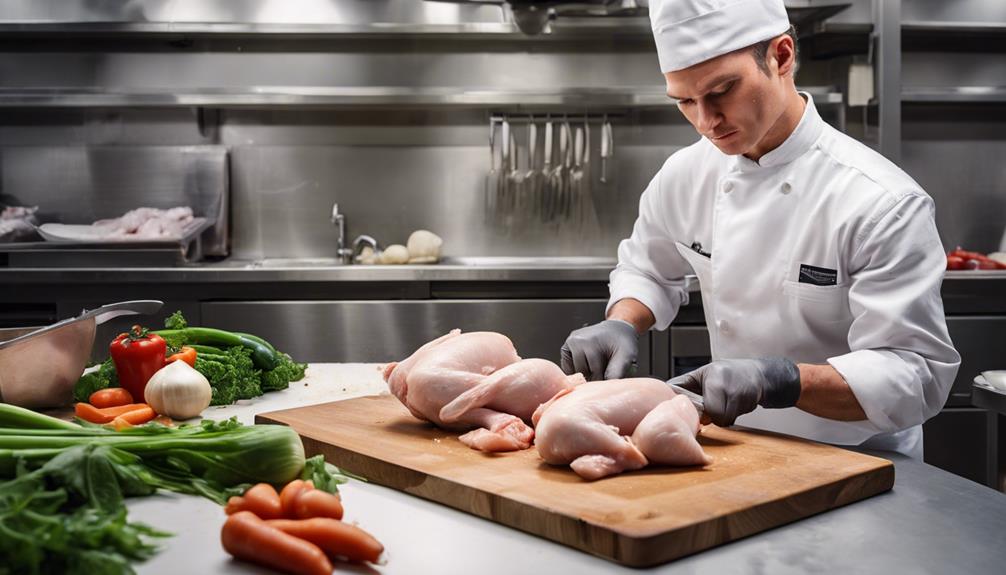Recent statistics show that coffee consumption in the United States is steadily increasing, as more people are looking for unique and flavorful caffeinated drinks.
Two popular choices that often spark debate are the flat white and the latte. These milk-based coffee drinks may seem similar at first glance, but upon closer examination, they reveal distinct differences in their preparation, ingredients, milk texture, and overall taste.
In this article, we will delve into the nuances that set the flat white and latte apart, exploring their origins, serving sizes, and the espresso used in each.
We will also examine the importance of milk texture and foam in creating the perfect cup of each beverage, as well as the caloric and nutritional differences between the two.
By understanding these distinctions, coffee enthusiasts can make informed decisions when selecting their preferred drink.
Join us as we embark on a journey to unravel the mysteries of the flat white and latte, and discover which one best suits your taste buds and coffee cravings.
Key Takeaways
- Flat white and latte are two distinct milk-based coffee beverages.
- The main difference between flat white and latte lies in the amount of milk used and the texture of the milk foam.
- Flat white is served in a smaller ceramic cup, while latte is served in a larger glass.
- Both flat white and latte can include one or two shots of espresso, with two shots being more common in the U.S.
What is it?
Both flat white and latte are milk-based coffee drinks that differ in their serving sizes and milk textures.
The flat white originated in New Zealand and Australia, where it holds cultural significance as a popular drink. It is served in a smaller ceramic cup, typically 150 ml or 175 ml.
The latte, on the other hand, was created in the 1950s to meet the demand for a milder cappuccino and has since gained widespread popularity. It is served in a larger glass, ranging from 200 ml to 240 ml.
In terms of taste and flavor profile, the flat white allows the espresso flavors to shine through, with a creamy and velvety texture due to microfoamed milk. The latte, on the other hand, has a more pronounced milk flavor and a lighter, frothy texture.
Preparation and Serving
The preparation and serving of these milk-based coffee drinks involve specific techniques and vessel sizes.
Brewing methods for flat white and latte vary slightly. For a flat white, the process typically begins with extracting one or two shots of espresso, which are then combined with microfoamed milk. The milk is heated and steamed to create a velvety texture without froth. This technique allows the espresso flavors to shine through.
On the other hand, a latte requires steaming and frothing about 175 ml of milk. The milk is poured over one or two shots of espresso, resulting in a creamy and frothy beverage.
In terms of serving styles, a flat white is traditionally served in a smaller ceramic cup, usually 150 ml or 175 ml, while a latte is typically served in a larger glass, ranging from 200 ml to 240 ml.
Ingredients and Espresso
When it comes to the ingredients used in the preparation of flat white and latte, one key element that sets them apart is the type and quality of espresso used, which serves as the foundation for these milk-based coffee beverages.
Both flat white and latte can include one or two shots of espresso, with two shots being more common in the U.S. However, the difference lies in the type of espresso used. Flat white can be made with ristretto, which is an espresso made with half the usual amount of water. This creates a more concentrated and intense flavor profile.
On the other hand, latte typically uses a regular espresso shot. Additionally, the optimal milk temperature for latte is around 62.5C, which is crucial for achieving the desired creamy texture. The choice of espresso and the careful control of milk temperature contribute to the distinctive characteristics of flat white and latte.
Milk Texture and Foam
One notable aspect to consider is the variation in milk texture and foam between flat white and latte, which significantly contributes to the overall taste and experience of these coffee beverages.
-
Steaming technique: The way the milk is steamed plays a crucial role in determining the texture and consistency of the milk in both flat white and latte. In a flat white, the milk is microfoamed, creating a velvety and silky texture. In contrast, a latte requires more frothing, resulting in a creamier and thicker foam layer on top.
-
Milk density: The milk used in a flat white has a lower density compared to that in a latte. The microfoamed milk in a flat white is lighter and smoother, allowing the espresso flavors to shine through. On the other hand, the milk in a latte is both steamed and frothed, resulting in a denser and creamier consistency that blends harmoniously with the espresso.
-
Milk-to-espresso ratio: Both flat white and latte have a similar milk-to-espresso ratio. However, due to the difference in milk texture, the balance between milk and espresso can vary. In a flat white, the silky microfoamed milk provides a more equal distribution with the espresso, creating a harmonious blend. In a latte, the creamier foam layer adds a distinct layer of richness on top of the espresso.
Calories and Nutrition
Calories and nutrition can vary between flat white and latte due to differences in milk density and foam texture. When comparing the two drinks, it is important to consider the type of milk used and any additional ingredients, such as sugar or flavored syrups.
Generally, a flat white has fewer calories and less fat compared to a latte, especially if it is made with skim or low-fat milk. However, if a flat white is prepared with cream milk or sweetened with sugar, the calorie content can increase significantly.
Both drinks provide a good source of calcium and protein from the milk. It is worth noting that the health benefits of these drinks depend on individual dietary needs and preferences. For those looking to minimize calorie intake, opting for a flat white with skim milk or a latte with alternative milk options can be a healthier choice.
Frequently Asked Questions
Can you make a flat white with flavored syrups?
Using flavored syrups in a flat white can be a personal preference, but it is not a traditional or common practice. Flat whites are typically made with just espresso and microfoamed milk, without the addition of flavored syrups.
However, some coffee shops may offer the option to add flavored syrups to a flat white for those who enjoy a sweeter or flavored taste. The use of flavored syrups in coffee, including in a flat white, has both pros and cons.
On the positive side, flavored syrups can add variety and enhance the taste of the coffee. They can also provide a sweet and indulgent experience. However, the addition of flavored syrups can mask the natural flavors of the coffee and may not be suitable for those who prefer the traditional taste of a flat white.
Additionally, flavored syrups often contain added sugar and artificial ingredients, which can increase the calorie content and may not align with a person’s dietary preferences or restrictions.
Ultimately, the decision to use flavored syrups in a flat white is subjective and depends on individual taste preferences.
How does the caffeine content in a flat white compare to other espresso-based drinks?
In terms of caffeine content comparison, a flat white contains the same amount of caffeine as other espresso-based drinks. Generally, a flat white made with two shots of espresso will have around 150 mg of caffeine. This is comparable to a standard latte, cappuccino, or macchiato.
However, it is important to note that the actual caffeine content may vary depending on the size of the drink and the coffee beans used.
As for health benefits, both flat white and latte provide a source of antioxidants and may offer potential benefits such as increased alertness and improved cognitive function.
Can you make a latte with non-dairy milk alternatives?
Lattes can be made using non-dairy milk alternatives, which offers several benefits.
Using plant-based milk in lattes provides a suitable option for individuals who are lactose intolerant or follow a vegan diet.
Non-dairy milk alternatives, such as almond, soy, or oat milk, can impart unique flavors and textures to the latte.
Additionally, these alternatives often have lower levels of saturated fat and cholesterol compared to dairy milk, making them a healthier choice.
The popularity of non-dairy milk lattes has grown as more people seek out plant-based options for their coffee beverages.
Are there any variations of flat white or latte that are popular in other countries?
Variations of flat white and latte are popular in different countries around the world.
In Australia and New Zealand, flat white is a widely popular coffee drink, while in Italy, latte is a common choice.
In the United Kingdom, both flat white and latte have gained popularity in recent years.
In the United States, latte is more commonly consumed, but flat white has also gained a following.
The popularity of these drinks varies depending on cultural preferences and coffee traditions in each country.
What is the difference in taste between a flat white and a latte?
The difference in taste between a flat white and a latte lies in the aroma and texture of the drinks.
A flat white has a stronger, bolder flavor due to the higher concentration of espresso and the use of microfoamed milk, which creates a smooth and velvety texture.
On the other hand, a latte has a milder taste with a creamier texture, as it contains more milk and is steamed and frothed.
Exploring the origins and cultural significance of both flat white and latte further enhances our understanding of these popular coffee drinks.
What is the difference between a Flat White and a Starbucks Latte?
A Flat White is a creamy coffee drink made with microfoam, while a Starbucks Latte is a espresso drink topped with steamed milk and a small amount of foam. Starbucks offers a wide variety of lattes, including flavored options like vanilla or caramel.
Conclusion
In conclusion, the differences between flat white and latte lie in the amount of milk used and the texture of the milk foam.nnFlat white is served in a smaller ceramic cup with a pure silky texture, while latte is served in a larger glass with steamed and frothed milk.nnWhile both drinks have the same amount of caffeine if they have two shots of espresso, flat white has fewer calories and allows the espresso flavors to shine through.nnThink of flat white as a delicate brushstroke of espresso, while latte is a frothy canvas of milk.










